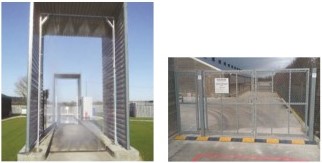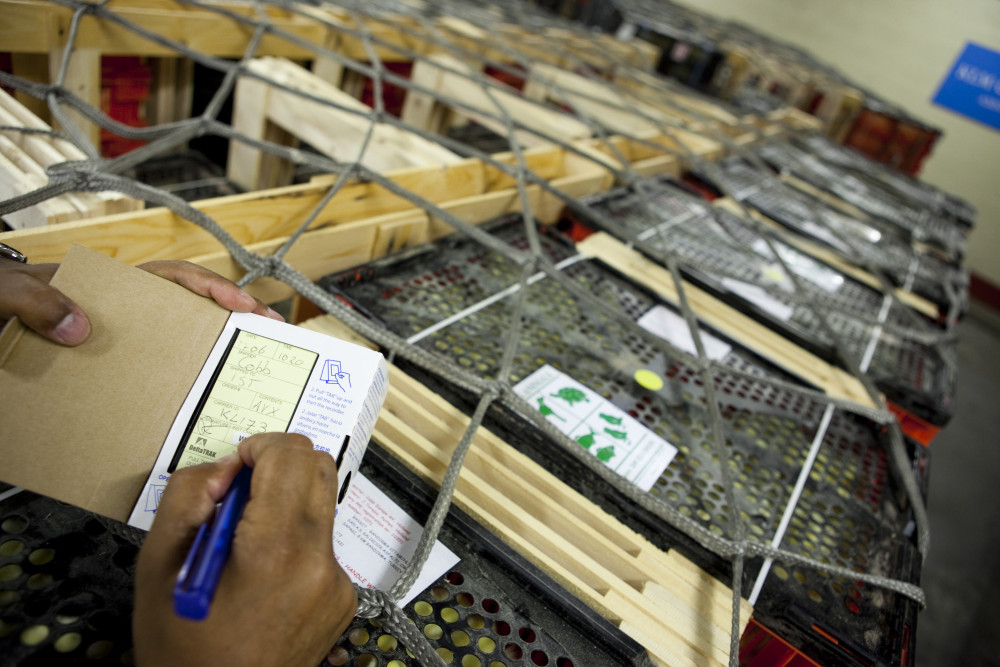by John Vincent, QA Director, Cobb Europe. www.cobb-vantress.com
Disease outbreaks that affect international trade are a fact of life. All businesses that generate revenue from export must develop strategies to manage the issues that follow notifiable disease outbreaks. Only two major diseases are of specific relevance to global poultry trade. These are Newcastle disease and avian influenza. The latter is by far the most critical and there are rarely months when a new outbreak is not declared by OIE. It is no longer a question of ‘if’ there is going to be another break, but ‘when’.
The challenge in these circumstances is how to maintain international trade routes. Poultry breeding stock are routinely shipped around the world across international borders and disruption of the supply chain is a very significant issue in maintaining the viability of poultry industries in many countries.
Clauses in Export and Import Health Certificates that target avian influenza were typically worded with a phrase similar to: ‘The supply flocks originate from a country that is officially FREE of notifiable avian influenza’.
This rapidly became an issue as the volume of notifiable breaks (of both low and high pathogenicity) increased. This is a very blunt instrument and the problem with the phrase is that it takes no account of the proximity of a break to the international borders of a country. For example, a farm close to a European border could cause that entire country to be put under export restrictions to third countries. If we use Germany as a test case, a flock near to the border with The Netherlands could stop a company 400km away from exporting product, while a business only 10km over the border would continue to trade.


In order to address this, health certificate wording was adjusted to add a phrase similar to ‘or the chicks originate from a region that is officially free of notifiable avian influenza’.
This attempts to address separation from a break by geographical features. This could be distance, true geographical separation by water or impassable features such as a desert or, more typically, by some form of administrative border.
This latter separation again fails to properly address the nature of separation. The advantage of it over country freedom alone is that operations with significant separation from a break within that country might be able to continue to trade, but the disadvantage is that administrative borders are often geopolitical in nature and were never intended to help manage trade under these difficult circumstances.
Efforts are now being made to add a third option to health certificate wording. This is much more specific and addresses the shortcomings of the two previous phrases. The third clause states ‘or the chicks originate from an approved COMPARTMENT’.
The OIE definition of a compartment under these circumstances is: ‘an animal subpopulation contained in one or more establishments under a common biosecurity management system with a distinct health status with respect to specific diseases... for which required surveillance, control and biosecurity measures have been applied for the purpose of international trade’.
The vital word of which to be aware in all the variations to health certificate wording is the term ‘Or’. These modifications are never intended to replace the original country freedom clause, they are intended to offer alternatives if, and only if, that original clause does not apply.
Where country or regional freedom clauses are the only recourse, the exporting companies are not in control of their local situation or supply chains. Evidence points to high quality biosecurity being the main factor in preventing avian influenza breaks in commercial poultry. Unfortunately, not all poultry businesses operate to the same ideals of biosecurity.
The position that primary breeders and high level supply companies hold within the supply chain dictates that biosecurity is paramount and a significant proportion of company turnover is spent in ensuring that farms and hatcheries operate in a way that will prevent unwanted (and notifiable) diseases ever entering them.
However, turnover and profits of all poultry operations are not the same and where margins are tight, some aspects of biosecurity can be some of the easiest things to remove when chasing down cost of production. This inevitably leads to increased risk of disease breaks in those operations.
In order for the concept of compartments to work, the levels of biosecurity operating procedures, separation and surveillance must be very significant. Operating procedures must be able to demonstrate that the total company supply chain is effectively separated from the rest of a country’s poultry industry and that all potential risks are assessed and addressed through appropriate control measures.
Listed below is only a small subset of the protocols required to be approved as a compartment. As previously mentioned, the entire supply chain must be managed to address risks and reduce or eliminate them to a level that the competent auditing authority can accept. For example, staff contact with other avian species outside the company must be strictly controlled. A combination of contractual requirements and a high level of ongoing training to raise awareness of risks are essential.
Every person that wishes to enter a compartment facility must agree to adhere to a full shower for a predetermined time.
No personal items will be permitted through the showers with the possible exception of spectacles which must also be disinfected with an appropriate chemical such as isopropyl alcohol.
External visitors must be managed to minimise risk by demanding an appropriate period of freedom from avian contact prior to visiting the company. This could easily vary depending on previous contact and whether there is an ongoing avian influenza issue in their country of origin.
Visitors will require prior approval from the company to visit and must complete a visitor record in a facility log book to state contact details and to list previous avian contact within a prescribed time. Facility managers must be trained to deny visitors access if there is any concern about their biosecurity status.
Vehicles that need to enter a facility must be disinfected at point of entry and the driver must complete a record with full details of previous facilities visited including dates.
Facilities must be completely and securely fenced to prevent casual entry and where risks are identified, the fencing should be enhanced to help deter wild bird ingress. All entry points should be locked at all times and signage should be visible to indicate that entry is strictly controlled.
Bird and rodent pests must be deterred and risks managed through comprehensive programmes administered by trained and accredited personnel. Staff training must be an integral part of the management of the compartment. Knowledge and ‘buy in’ of facility staff members is essential to the function of the biosecurity of the compartment.

Auditing scheduled by both internal and external accredited people is required to maintain all aspects of the compartment at a satisfactory level.
Standard operating procedures will be altered from time to time, but only with approval of appropriate qualified people who must critically assess the proposed amendments to ensure compartment integrity is not compromised before they are permitted.
If the concept of compartments is embraced by third country (importing) authorities, it will be a huge positive step in helping supplying companies maintain trade routes. Under these circumstances, the supplying company is in control of its own status and ability to export. As long as the business is a certified compartment (in the eyes of the competent authority in that country), it should be able to guarantee freedom from specific notifiable disease.
However, all compartments are not created equal. In different countries, the various competent authorities (usually the government department responsible for agriculture) can set their own standards and term them ‘compartment requirements’.
There are already several different compartment protocols already extant, each with their own specific requirements to satisfy. GB (GB enhanced), EU (EU 616), Brazil and OIE all have compartment protocols published.
Third countries can accept the standards set under one compartment scheme but potentially reject others. This could lead to reciprocal arrangements not being accepted and trade disrupted.
For compartments to be accepted globally, it is absolutely essential that the standards set are very high. If one compartment fails to address issues and an approved premises breaks for a notifiable disease, the whole concept of compartments will be called into question.


